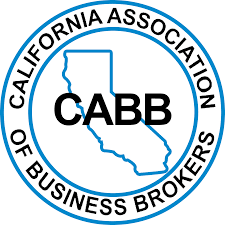EXCELLENTTrustindex verifies that the original source of the review is Google. We engaged Prencipe International as lead counsel on a complex acquisition, and their performance was exceptional. Joe Prencipe and his team demonstrated deep expertise in M&A law, particularly in navigating SBA-financed transactions and structuring around nuanced deal risks. Their responsiveness, clarity, and strategic guidance were instrumental in advancing the deal through diligence and negotiation. Joe’s ability to distill legal complexity into actionable advice was especially valuable. He balanced precision with pragmatism, helping us anticipate regulatory and operational hurdles before they became issues. I’ve worked with many firms over the years—Prencipe stands out for their client-first approach and real-world deal fluency. Highly recommended for anyone seeking sophisticated counsel in lower middle market acquisitions.Posted onTrustindex verifies that the original source of the review is Google. Mr. Prencipe was wonderful to work with. His experience was evident from the first minute of the conversation. He took the time to get to know our situation and ask very relevant questions to understand our needs. I would recommend him to anyone looking for legal advice or representation specifically with business matters and structures.Posted onTrustindex verifies that the original source of the review is Google. Prencipe International has been incredible to work with on our M&A deals. They has handled purchase agreements, licensing, and legal advice with professionalism and efficiency. Highly recommend for any business owner needing top-tier legal support.Posted onTrustindex verifies that the original source of the review is Google. Joe has been a tremendous asset to my team and has worked on two acquisition with me and my firm to date. His knowledge, wisdom, and communication throughout each deal has been instrumental in our success! I will continue to partner with Joe on every acquisition opportunity in the future!Posted onTrustindex verifies that the original source of the review is Google. Joe was fantastic to work with. Even though the deal didn’t end up going through, he made the whole process feel straightforward and supported us every step of the way. I always felt like we were in good hands, and wouldn’t hesitate to work with him again.Posted onTrustindex verifies that the original source of the review is Google. Joe is thorough and always ensures we have clarity on the matter being discussed.Posted onTrustindex verifies that the original source of the review is Google. I had an excellent experience working with Joe Prencipe. He provided clear guidance, handled all the paperwork seamlessly, and offered valuable insight every step of the way. I highly recommend his services for anyone needing knowledgeable and reliable legal support!Posted onTrustindex verifies that the original source of the review is Google. Sharp attorney- highly recommended!Posted onTrustindex verifies that the original source of the review is Google. Joe Prencipe has been an exceptional asset for our team in navigating two complex business transactions: a local business change of ownership that was particularly messy and a large international transaction. His professionalism, personable approach, and deep expertise in mergers and acquisitions made him an invaluable asset to our team. Joe skillfully guided us through the legal complexities of both deals, ensuring clarity and confidence at every step. His ability to manage the twists and turns of the law was remarkable, delivering results that exceeded our expectations. Without hesitation, I’d rate his services 6 stars minimum!Posted onTrustindex verifies that the original source of the review is Google. Joe Prencipe was thorough and efficient. His broad experience speaks for itself. Most importantly, I valued his direct, no non-sense approach.
BUY YOUR FIRST BUSINESS
The #1 First-Time Buyer M&A Law Firm & Advisor.
Our clients are first-time buyers of SBA 7(a)-financed $1-15m businesses nationwide seeking to expand their portfolio and achieve financial freedom within the next 3-9 months.
With over $100bn in deals under our belt, your business purchase is in expert hands.







FIRST-TIME BUYERS MAKE MILLION-DOLLAR MISTAKES WHEN THEY MAKE THEIR OWN LOI.
WE WILL PROTECT YOU FROM THOSE MISTAKES.
BOOK A CALL WITH US AND WE WILL PREPARE YOUR LOI TO MINIMIZE YOUR LIABILITY AND MAXIMIZE YOUR RETURN.
Top 4 Mistakes that Cost Millions.
1. First-time buyers often forget to add important protections like the holdback, setoff, clawback, RWI, or appropriate indemnification.
2. They don't know what they don't know - and don't negotiate for correct commercial terms like including the inventory in the purchase price at the standard multiple.
3. In the excitement of putting in an offer, buyers always forget to plan for the exit. You need to negotiate for terms like a break-up fee that protects you if the seller backs out after you've spent thousands on your accountant and advisors.
4. Business acquisition is a tried and true process, it's not an art. First-time buyers who try to wing it and play expert end up frustrating sellers and losing money.

PART OF our portfolio of first-time buyer acquisitions
Market-Leading Expertise.
Joe Prencipe
MANAGING PARTNER
"With world-class expert guidance, purchasing a business is a calm and clear process; there without, it is a mis-step that exposes you to a panoply of risk."
MY EXPERIENCE
Mr. Prencipe began his career at the leader of the Magic Circle of international law firms in the world, and the #1 international law firm in the world in M&A, Freshfields Bruckhaus Deringer LLP. He also worked at the #4 largest law firm in the world by revenue, Baker McKenzie LLP, and clerked at the U.S. Securities and Exchange Commission.

The Team.

David Girault

Chris Gandy

John Rosenbaum

David Gibson
What Does a Business Acquisition Lawyer and Advisor Do For Me?
Buying a business is not like buying a car or a house. It’s the most complex and value-accretive transaction that a person can undertake in his or her entire lifetime, converting $200k down into $1m profit in the first year.
It surprises many business buyers to learn that the acquisition process involves various specialized legal complexities that can make or break them.
Establish Structuring. What is the optimal tax structure for your acquisition? Do you do a stock or asset purchase? Do you do a 338(h)(10) election, 336(e) election, or F-Reorg? What’s the PPA? Is the target’s S-Corp status violated? Is the 60 month rule at issue? Is the working capital, WIP, and inventory being managed properly? Buying real property or leasing? Do you have a family trust structure that needs to be integrated into the acquisition structure? Do the terms satisfy the SBA’s requirements?
Draft Transaction Documentation. Draft and negotiate the purchase agreement, promissory note, board and shareholder consents, assignment & assumption agreement, bill of sale, transition services agreement, consulting/employment agreements, and non-compete agreements. Review, revise, and negotiate lender and equity purchase documents, lease assignments, lease assumptions, disclosure schedules, etc.
Perform Legal Due Diligence. Prepare the legal due diligence request list customized for the target. Run lien and litigation search on the seller(s) and target(s).
Manage Escrow. Arrange and manage escrow for escrow holdback and closing disbursement; prepare and negotiate escrow agreements.
Closing Attorney. Act as closing attorney, prepare the closing statement, prepare the closing book, manage the closing checklist for timely closing, conduct post-closing tasks.
Our fees are lowest in the market, representative of our experienced process and team:
- $999 Retainer Fee
- $6,999 Closing Fee
The Closing Fee is not charged if your transaction does not close. See your service agreement for more details.
Week 1
1. Intake call with client to review deal.
2. You engage us as your attorney and advisor.
3. We draft the offer letter (“LOI”) for you.
4. We schedule a call with the seller and seller’s broker to present the offer.
5. We verbally present the offer to the seller.
Weeks 2 - 3
6. Draft and submit the legal due diligence requests.
7. Structure the transaction (tax, form, state, etc).
8. Review relevant state and federal laws for licenses, permits, and regulatory compliance.
9. Draft the purchase agreement and ancillaries.
10. Ongoing transaction management.
Weeks 4 - 6
11. Review the due diligence responses; prepare foll0w-up due diligence Q&A.
12. Negotiate the purchase agreement and ancillaries – often 2-6 revision cycles.
13. Conduct lien and litigation background searches on the seller(s) and the target.
Weeks 7 - 8
14. Close out due diligence. Submit short-form due diligence red flag report to the client highlighting material legal issues.
15. Lead lender communications and oversee closing checklist.
16. Prepare closing documents needed for lender’s closing checklist.
17. Arrange escrow for holdback and disbursement; review/revise escrow agreement.
18. Prepare closing statement.
Weeks 9 - 12
19. Review execution drafts, arrange e-signing.
20. Liaise with bank and seller for signing.
21. Closing.
22. Prepare closing book.
23. File post-closing local, municipal, state, and/or federal filings or notices required as part of the transaction or change of ownership.
Our transactions are in the headlines.











Our expertise is broad and deep.
- Mergers & Acquisitions
- Dispute Resolution
- Litigation
- Arbitration
- Entity Formation
- Transaction Structuring
- Tax Structuring
- Corporations
- LLCs
- Partnerships
- Holding Companies
- Founder Stock Structuring
- Corporate Governance
- Corporate Documentation
- Employee Benefits & ERISA
- Stock Option Plans
- Business Transactions
- Commercial Agreements
- SaaS Agreements
- Supply Agreements
- Licensing Agreements
- IP Agreements
- Roll-ups
- Seller Financing
- Equity Roll-overs
- SBA Financing
- Startup Financing
- Venture Capital
- Equity Preferred Financing
- Venture Debt
- Convertible Notes
- Warrants
- Loans
- Mezzanine Financing
- Structured Financing
- SEC & Blue Sky Filings







